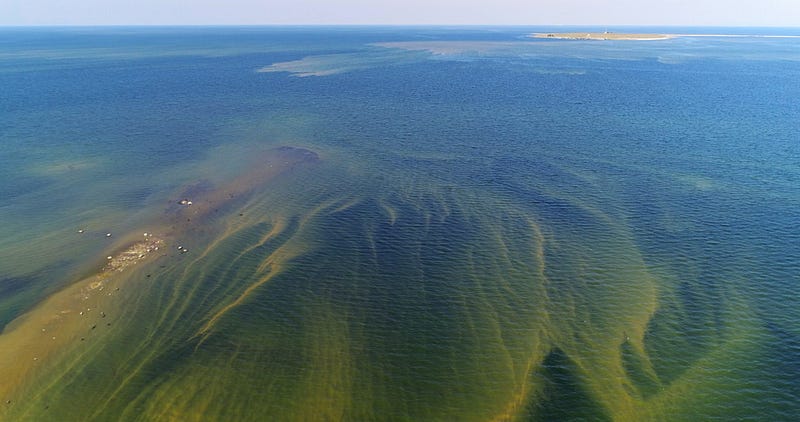Climate action without representation: Considering the unseen microbial majority
By Claire Williams, Biochemistry, 2020

In the current span of geologic time, dubbed the Anthropocene Epoch, human activity has been the dominating influence on global change. Climate science has been in the mainstream for many years as researchers have teased apart the interactions between human activity, greenhouse gases in the atmosphere, and the warming climate. Recently, a cohort of scientists has banded together to turn the attention toward humanity’s microbial cohabitants, emphasizing the role that microorganisms play in mitigating and exacerbating the effects of human activity on Earth’s climate.
Microorganisms are ubiquitous, comprising some 10^30 cells on Earth. They constitute the “unseen majority” of living cells on Earth. These organisms, comprised of bacteria, viruses, protozoa, fungi, archaea, and unicellular eukaryotes, are highly diverse, and colonize even the most extreme environments on the planet. They catalyze fundamental reactions in the biogeochemical and nutrient cycles of ecosystems, converting elements into usable forms for plants and animals. They live in and on multicellular hosts, playing fundamental roles in metabolism, development, and immune function. If all microbes were to disappear, survival of all higher life forms would be doubtful. Biogeochemical cycling would cease, decomposition would halt, and many organisms reliant on microbial metabolism in their gut would soon die. While the complete disappearance of microbial life is a dramatic and highly unlikely scenario, the impacts of human activity, however subtle, may still cause shifts in microbial communities, resulting in dramatic downstream effects.
While the complete disappearance of microbial life is a dramatic and highly unlikely scenario, the impacts of human activity, however subtle, may still cause shifts in microbial communities, resulting in dramatic downstream effects.
With so many microbial cells, the roles and responses that these organisms may have in a changing climate and planet must be examined. These responses span many different ecosystems, from terrestrial to aquatic. For example, microscopic organisms in the ocean are responsible for a significant portion of carbon fixation — the conversion of inorganic carbon to organic carbon — and oxygen production. Marine phytoplankton perform an important photosynthetic role, with 50% of global carbon fixation and oxygen production linked to their activities. Diatoms absorb carbon in a different way, by utilizing CO2 to build very heavy cells, resulting in the organisms sinking to the bottom of the ocean upon their death, locking away the carbon in the ocean floor. In the deep-sea, carbon fixation involves marine bacteria and archaea. Scientists do not fully understand how this massive reservoir of metabolic activity will respond to global climate change. The ability of these ocean-dwelling organisms to buffer carbon emissions might be retained, modulating the amount of CO2 that remains in the atmosphere. On the other hand, global warming might alter nutrient availability, or impact the timing of seasonal changes, resulting in decreased CO2 sequestration by available microorganisms, and exacerbated accumulation of greenhouse gases. This, in turn, might inhibit the success of these key microbial species, permanently altering the makeup of their communities.
On land, microbes have many roles that are closely interconnected with carbon cycling. For example, microbes are responsible for regulating carbon cycling and sequestration in soils. Soil stores more than 2,000 billion tons of carbon, and these microbes are the gatekeepers for the release of carbon into the atmosphere. Soil microorganisms also play important roles in the cycling of other nutrients, including nitrogen, which has a direct impact on the growth of plants. The ability of plants to survive, grow, and photosynthetically remove atmospheric CO2 has significant influence on the homeostasis of greenhouse gases. The balance of carbon cycling becomes further complicated, though. As plants die, microorganisms on the ground decompose their remains, emitting carbon to the atmosphere in the process. Increased plant growth sequesters more carbon from the atmosphere, but increased plant biomass provides fuel for microbial decomposition that increases carbon emissions. This is only one example of a delicate carbon balance, in which microorganisms have a fundamental role, that exists in nature. With microorganisms covering every habitat on the planet, these balances exist across nature, and are yet to be explored in most circumstances.
In order to fully understand the impact of human activity on the climate, and greenhouse gas production, we must consider the complex, interconnected roles of microorganisms.
The United Nations projects that the climate crisis has reached a tipping point, and, if significant changes are not made, irreversible damage to Earth’s ecosystems may occur within eleven years. In order to fully understand the impact of human activity on the climate, and greenhouse gas production, we must consider the complex, interconnected roles of microorganisms. Without them, we would have no life on Earth. With them, we can better predict and modulate the full impact of human activity on our planet.
DOI:10.1038/s41579–019–0178–5
DOI:10.1038/s41579–019–0222–5
DOI:10.1371/journal.pbio.1002020
